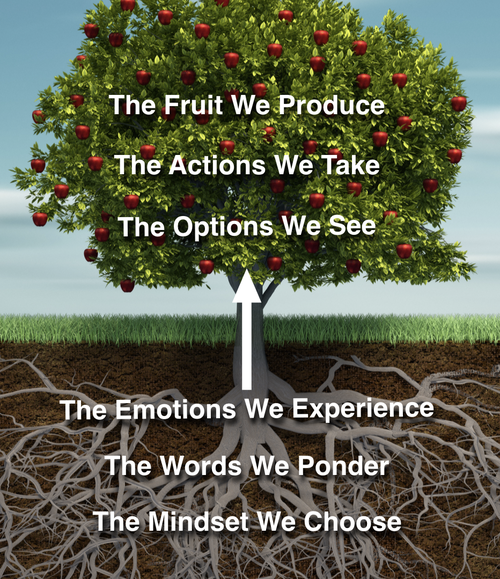Feeling Stuck? How to See More Options
Feeling Stuck? How to See More Options
“Strikingly, resilient people not only cultivate positive emotions in themselves to cope, but they are also skilled at eliciting positive emotions in others.”
Sometimes life can feel overwhelming because our world is changing at an ever increasing pace. Sometimes I get stuck. To make great choices, we need great options but sometimes our brain blinds us and we experience tunnel vision under pressure. When you understand how your brain works, there are some practical strategies you can use to break through barriers.
Sometimes Your Brain Can Work Against You
Designed for survival, when we experience fear our brain blocks out all distractions and, with laser-like precision, we focus on the perceived threat. This can be helpful if the other guy has a knife. Our eyes dilate, our heart rate increases, we breathe faster, and we tune out all distractions. We are ready for action: fight or flight. Only two choices. There is no time for debate. This ability to narrow our vision can be lifesaving in the right situation. But, it can also get us in trouble. Consider the guy who is walking down the street hanging his head in discouragement. Plodding along, he walks head first into a very unforgiving and immovable lamppost. Tunnel vision has its drawbacks.
If You Know How, You Can Make Your Brain Work for You
What about positive emotions? How do they impact our brains? Barbara Fredrickson, a professor in the department of psychology at the University of North Carolina at Chapel Hill, developed the “Broaden and Build Theory” to describe the impact of positive emotions. She says, “Positive emotions broaden an individual’s momentary thought–action repertoire: joy sparks the urge to play, interest sparks the urge to explore, contentment sparks the urge to savor and integrate, and love sparks a recurring cycle of each of these urges within safe, close relationships.”1 In other words, when we experience positive emotions, we see more options. Positive emotions promote the discovery of new and creative ideas and they build social bonds which build our resources. Like a wide-angle lens for the brain, positive emotions expand our view. Fredrickson says, “… when positive emotions are in ample supply, people take off. They become generative, creative, resilient, ripe with possibility and beautifully complex.”
Positive Emotions: Do We Have a Choice?
You may think, “How in the world am I supposed to experience positive emotions when times are tough?” but we do have a choice. Really. Here are five strategies I’ve trench-tested:
Name the emotion: Pay attention to your emotion and give it a specific name: “I’m feeling angry.” “I’m feeling sad.”
Claim your choice: Most of the time, you can either stop the situation, put it on pause, or avoid it altogether.
Tame your reaction: Use mindfulness to widen the gap between what happens and how we respond. Remember the words of Auschwitz survivor Viktor Frankl: “Between stimulus and response there is a space. In that space is our power to choose our response. In our response lies our growth and our freedom.” A great place to start with the practice of mindfulness is the smartphone app called “Calm”.
Frame your perception: The internal dialogue we use to describe our circumstances can be pivotal. The words we ponder directly impact our emotions. We can frame difficult experiences from a wide range of perspectives: Anywhere from the idea that a challenge is a sure sign we are cursed to the perspective it is an experience from which we can learn.
Aim for gratitude: We can celebrate even during tremendous loss. Research has proven that keeping a gratitude journal (where you write three things each day you are grateful for and take the time to savor them) increases happiness. I use the smartphone app “The 5 Minute Journal” daily.
Five steps: Name, claim, tame, frame, and aim. Cultivate positive emotions and you will see the world differently. You will discover more options and increase your ability to break through barriers when times are tough.


